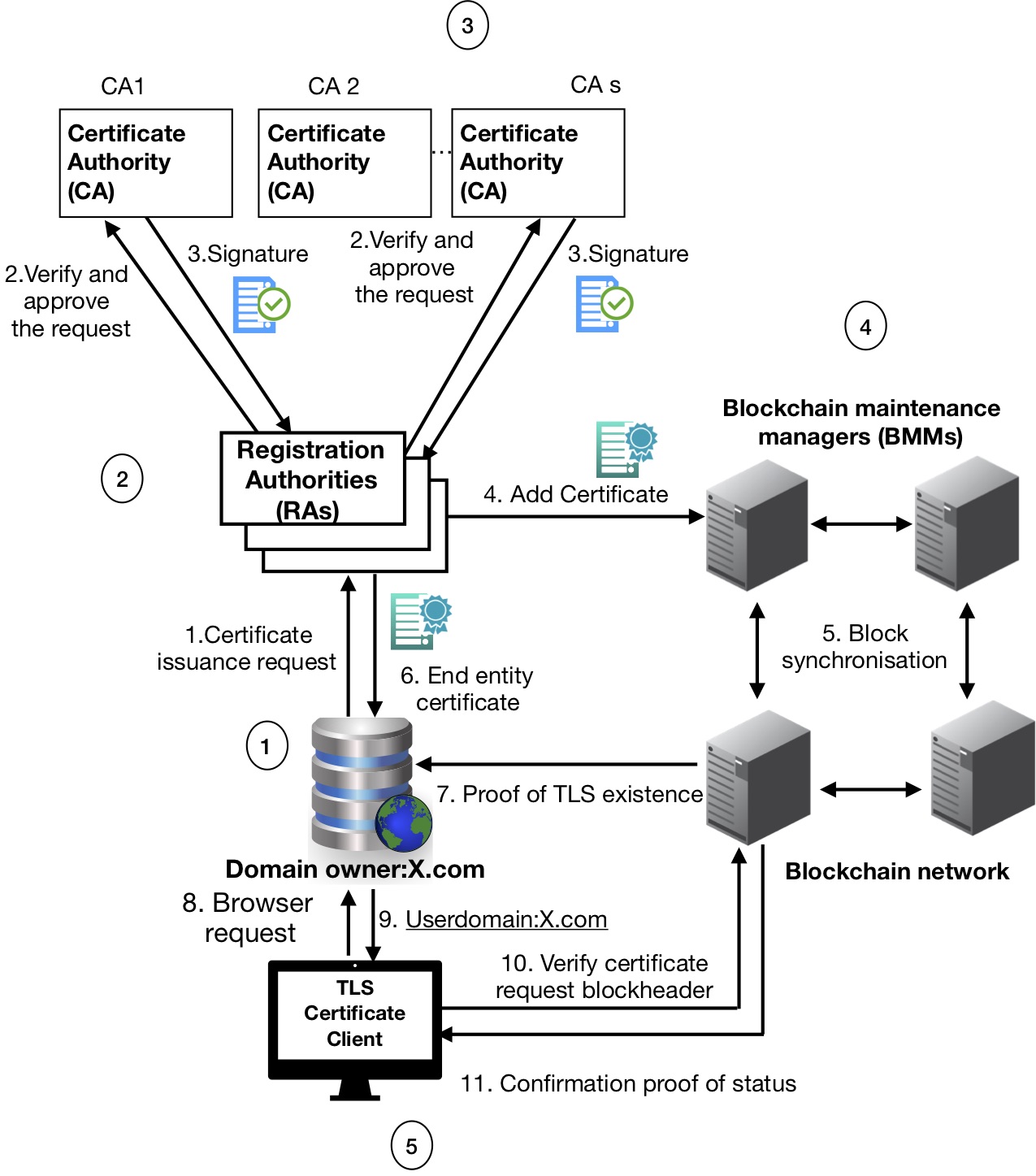BB-PKI is a certificate management system that addresses the security vulnerabilities as a result of impersonation attacks, causing CA misbehaviour due to weakest-link security problem at RAs in the current PKI. The main aim of BB-PKI is not to detect impersonation attacks against RAs; rather, it prevents such attacks from happening by imposing manifold RAs as well as CAs to vouch and sign the certificates. Certificate Issuance Request (CIR) should be vouched by manifold RAs. Multiple CAs shall sign and issue the certificate using an out-of-band secure communication channel. Any RA that contributes to the verification process of a user’s request can publish the certificate in the blockchain by creating a smart contract certificate transaction. BB-PKI offers strong security guarantees, compromising n−1of the RAs or CAs is not enough to launch impersonation attacks, meaning that attackers cannot compromise more than the threshold of the latter signatures to launch an attack.
In this repository we implement a prototype of BB-PKI. The general architecture of BB-PKI is depicted in the below Figure.
In order to deploy the BB-PKI, to add and revoke the certificate in the blockchain require to setup testnet Ethereum Virtual private network.
A step by step series of examples that tell you how to deploy the BB-PKI and run succesifully by performing all the functionalities.
Also this the nodejs codes is used to generate state Merkle proof for TLS certificates and verify it. We apply zmitton/eth-proof as the underlying library.
A domain owner creates a certificate signing request (CIR) generating a public- private key pair using the JavaScript crypto module through a number of trusted RAs (RAs≥ 3 and RAs ≤ 10) , after an automatic verification and vouching of a domain owner CIR by the RAs, Using an out of bound secure communication channel the certificate gets signed by a number of CAs (CAs≥ 3 and CAs ≤ 10) utilizing the concept of BLS-Multisignature system. After a verification of a CIR request by RAs a function named signCertificate from the file bbpki.js gets called via a get request API, on successful request, the certificate gets singed by using a JavaScript bls multisignature library node-bls12-81.
After a certificate has been signed, it is then forwarded into our deployed Ethereum smart contract with the following certificate parameters version, subject name, serial number, multisignatures, certificate signature, certificate public key, signature verified, certificate status, issuer, expiry via web3.js. A function issueCertificate on our smart contracts accepts the certificate parameters and saves a copy of the certificate in a mapping certificates. A transaction is being created on the process, upon a successful execution of the transaction, the following occurs sequentially; The certificates get included into the Ethereum blockchain returning a transaction receipt.
